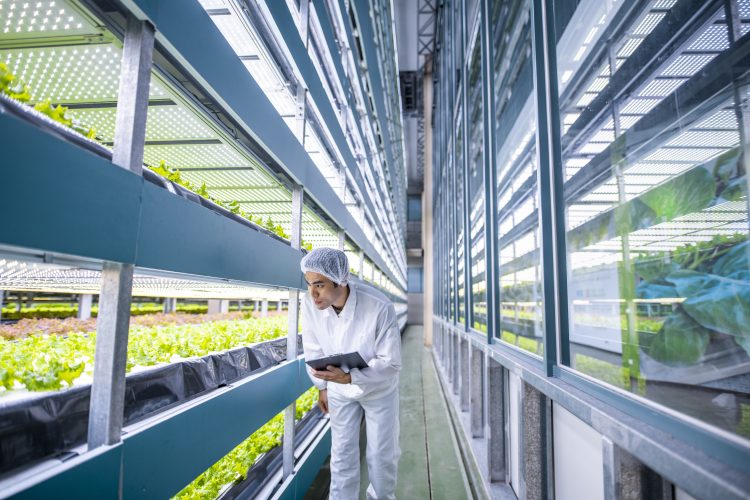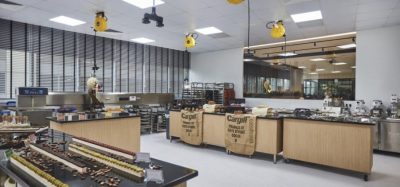Unlocking the future of smart vertical farming with automation
- Like
- Digg
- Del
- Tumblr
- VKontakte
- Buffer
- Love This
- Odnoklassniki
- Meneame
- Blogger
- Amazon
- Yahoo Mail
- Gmail
- AOL
- Newsvine
- HackerNews
- Evernote
- MySpace
- Mail.ru
- Viadeo
- Line
- Comments
- Yummly
- SMS
- Viber
- Telegram
- Subscribe
- Skype
- Facebook Messenger
- Kakao
- LiveJournal
- Yammer
- Edgar
- Fintel
- Mix
- Instapaper
- Copy Link
Posted: 11 February 2025 | Louise Liddiard | No comments yet
Vertical farming has an essential role to play in sustainability by cutting the distances from farm to fork, and feeding a growing population. However, as Schneider Electric’s Louise Liddiard reveals, it requires careful deployment to achieve the best return on investment.


Sustainability has become more important to UK shoppers, according to a report published in September 2023 by food product testing agency Vyper.1 The report found that almost two thirds of UK consumers are willing to pay more for sustainability. For food manufacturers, this consideration sits alongside the constant pressure to maintain availability, quality and variety to meet demand for consumers’ favourite products. As well as facing these challenges, traditional agriculture must also meet new regulatory requirements, recruit seasonal workers and deliver seasonal produce year-round while adapting to climate change. With a growing population, traditional farming cannot meet future demand alone.
Despite its huge potential benefits, due to the nature of vertical farming operations, great care is needed when deploying the technology.
One solution is for the industry to embrace vertical farming technology to work in synergy with traditional farming. Using this approach, companies can respond to sudden changes in demand and cut the distance between farm and fork to command a premium price for sustainability. Being led by technology rather than muscle power, gleans several advantages; chief among them are reduced reliance on seasonal staff and the ability to control the environment/growing conditions to produce crops to meet demand.
As a concept, vertical farming is not new, but it is an important tool for high value crops in specific markets. Technology developments are now taking the concept to the next level through next-generation automation and robotics technologies as well as renewable energy generation and energy efficiency improvements. Despite its huge potential benefits, due to the nature of vertical farming operations, great care is needed when deploying the technology.
Hand-in-hand with traditional agriculture
The key to indoor and vertical farming is that it expands upon the same principles that farmers have used for centuries to extend the growing season. For example, by mulching, farmers can regulate soil temperature, protect soil health, limit weed growth and retain moisture. Traditionally, this method helps to maintain optimal growing conditions, enabling farmers to grow crops beyond their normal growing season. However, optimising the growing environment in a vertical farm can achieve similar results and maximise yields.
Not only can growers control variables such as temperature, moisture and lighting, but soil-free growing media or hydroponics can also reduce the likelihood of pests or weeds. An important step for sustainability is to combine such an operation with wind and solar panels for energy generation, thus providing more control over electricity bills and keeping a check on the carbon footprint. Furthermore, the soil-free growing media used in vertical farming uses less water than traditional farming, and water-recycling mechanisms can be used to minimise waste and make the most of water resources.
According to the Vypr report, more than 25 percent of people say they are now buying more local produce than ever before. With a vertical farm located close to the community it supplies, even in urban areas, delivery routes are shorter. This cuts the carbon dioxide emissions from transport and makes local produce more accessible. However, the key to success is to focus on high-value crops and operate alongside traditional farming.
Controlling cost and quality
While vertical farming offers opportunities for year-round income and reducing the travel miles associated with some foods, there are barriers. Growers need to establish funding for initial setup, as well as energy and know-how to run and maintain systems.
With the population growing and the desire shifting towards local production and sustainability, vertical farming offers an opportunity to meet demand without negatively impacting the environment…
Digital technology can overcome these challenges by providing energy management through control and monitoring of water, heating and lighting systems from a single platform. This provides insight and control, delivering operational efficiency, reduced energy costs and improved crop quality. For example, many energy management systems can control complex nutrient levels and optimise the use of resources to manage operational costs.
In addition, digital energy management can control energy bills by maximising use of wind and solar power produced on-site. This ensures optimal conditions for crops throughout their growth cycle, leading to consistent quality and uniformity. In turn, this provides greater certainty over income, which helps farmers to make a business case for the investment.
With the population growing and the desire shifting towards local production and sustainability, vertical farming offers an opportunity to meet demand without negatively impacting the environment as well as provide controlled environments that can deliver consistent year-round crop production for the food industry. It represents a valuable option to support food manufacturers as they strive towards sustainability and decarbonisation.
For successful roll-out of vertical farming across the UK, it is essential that growers and technology suppliers work together to fully understand the challenges and take action to overcome them. This was the objective of a workshop held in September 2023, hosted by Schneider Electric and Agri-TechE, an independent membership organisation. It gathered representatives from across the industry to discuss the actions needed to meet Fortune Business Insights’ prediction that vertical farming will grow from $4.2 billion to $27 billion between 2022 and 2030.2 By working with a technology partner that provides digital support, growers can maximise efficiency and use of renewable energy while mitigating up-front investment costs.
Learn more about the future of vertical farming here.
References
- Food for Thought. Does sustainability matter? [Internet]. 2023. Available from: https://vyprclients.com/wp-content/uploads/2023/11/Ebook-Food-for-Thought.-Does-Sustainability-Matter.pdf
- Fortune Business Insights. Vertical Farming Market Size, Share, Growth | Analysis Report, 2026 [Internet]. www.fortunebusinessinsights.com. 2023. Available from: https://www.fortunebusinessinsights.com/industry-reports/vertical-farming-market-101958
About the author


Louise Liddiard is a Key Account Manager for Food & Beverage at Schneider Electric UK & I. With a solid background in Food & Beverage marketing and a passion for sustainability, logistics and agri-tech, she is well-placed to support innovation within the segment. Louise’s expertise spans market analysis, strategic planning and customer engagement, with her current role involving working with customers to implement digital solutions and drive efficiency across industrial applications.
Related topics
Data & Automation, Environment, Equipment, Lab techniques, Robotics & automation, Technology & Innovation









